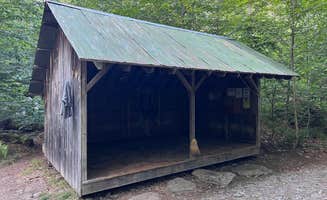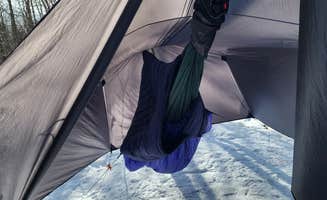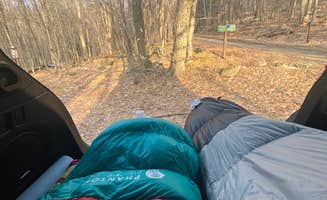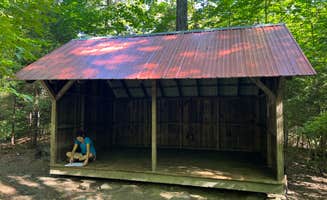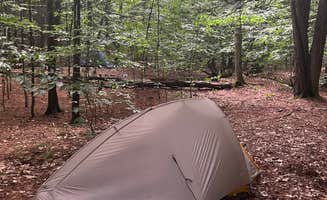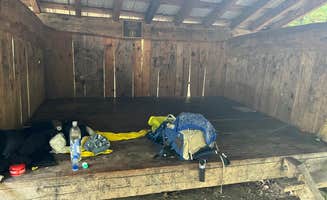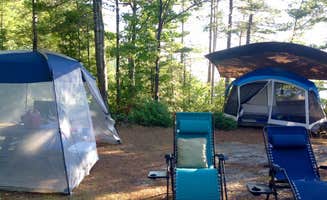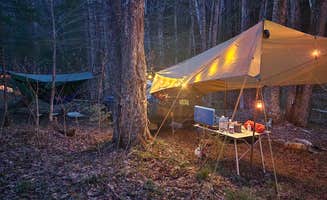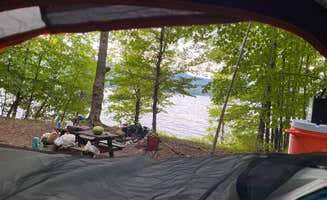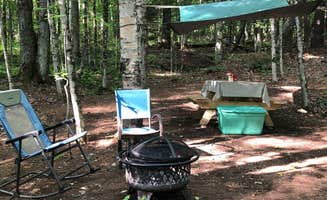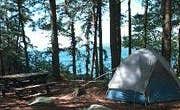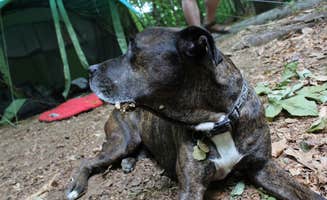Green Mountain National Forest offers numerous dispersed tent campsites near Belmont, Vermont with varying access and amenities. The forest encompasses 400,000+ acres across central and southern Vermont, with elevations ranging from 900 to 4,000 feet. Camping conditions change dramatically between seasons, with muddy spring conditions contrasting with typically drier late summer periods.
What to do
Water activities at ponds: Little Rock Pond Group Camp & Shelters provides swimming opportunities in a mountain pond setting. According to camper Meredith C., "Easily my favorite campsite in the Northeast! The pond is surprisingly warm for its altitude and it's home to two Common Loons. There's a huge jumping rock on the far side of the pond."
Hiking trail connections: Stratton Pond Shelter offers proximity to multiple trail systems. One camper notes, "Great location at the intersection of AT, LT and Stratton Mountain trail... The lake looks great and is one of the largest bodies of water on the Long Trail."
Stream exploration: Drive-in sites at Michigan Brook Road Camping provide access to brook exploration. Camper Thomas and James S. advise, "Road goes in pretty far. Some parts are muddy and very rough. Higher clearance would be advised!!!"
What campers like
Amenities at backcountry shelters: Justin P. reports about Thistle Hill Backcountry Shelter, "The shelter was a one-story standard AT shelter with a fire ring and a bench for seating... There was a decent privvy and water during my stay, though it was right after a smaller storm the previous evening."
Accessibility to local services: Michigan Brook locations offer unexpected proximity to civilization when needed. Keegz M. explains, "If you walk to the end of upper Michigan Brook road you will have cell phone service and a gas station along with a United States Post Office as well as a general store which also serves as a restaurant."
Level tent platforms: Happy Hill Backcountry Shelter offers good tent placement options. A visitor observed, "There were a bunch of level tent camp sites around the shelter. The loft was nice since folks could decide to sleep up there while others were down below, either cooking, arriving, or departing."
What you should know
Seasonal water availability: Water sources at backcountry shelters fluctuate greatly. Justin P. observed at Happy Hill Backcountry Shelter, "There wasn't any water at the source while I was staying here and it looks like a seasonal source."
Road conditions for drive-in sites: Michigan Brook access can be challenging with conventional vehicles. Maggie F. cautions, "Beware that in Spring the road gets muddy and quite rutted, I would not recommend driving down there with a car that is low to the ground."
Winter preparation requirements: Winter camping requires additional equipment at higher elevations. Miccal M. shares about winter camping at Stratton Pond: "Cold, Snow, Wind, full moon in the middle of the woods with only the people I hiked in with. The shelter is a 3.75mi hike from the nearest parking lot in winter."
Tips for camping with families
Multi-tent camping areas: Winturri Backcountry Shelter offers space for multiple tents. Justin P. observes, "The shelter is on the larger side and could fit maybe 6-8 folks. There were lots of tent camping spots as you worked up the hill perpendicular to the shelter."
Stream-adjacent sites: Look for sites with water features for child-friendly activities. At Bingo campground, Rose notes, "Couple of spots along the forest access road. Beautiful stream close by."
Specific site selection: For family camping at Michigan Brook, TRUCKER C. recommends, "Drive in about a mile after the parking lot!! Can use car to get in! There's 3 camping spots. 1 before the bridge and 2 after the bridge! The one before the bridge that's right next to the river is the best one!!"
Tips from RVers
Clearance considerations: Last light on Michigan Brook can accommodate smaller vehicles but requires attention to road conditions. Thomas and James S. advise, "Love this site! The very last spot on the right hand side. If you've reached the closed gate you've missed the site!"
Site identification: Locate designated camping areas along forest service roads by looking for established fire rings. At Michigan Brook sites, Maggie F. notes they are "frequently camped in so fire rings exist. As with many free campsites, there was some trash (please practice LNT fellow campers!!!)."
Seasonal closures: Check for road status before attempting backcountry access with vehicles. Matthew B. reported about one Michigan Brook access point: "Road has been closed," highlighting the importance of verifying current conditions.


